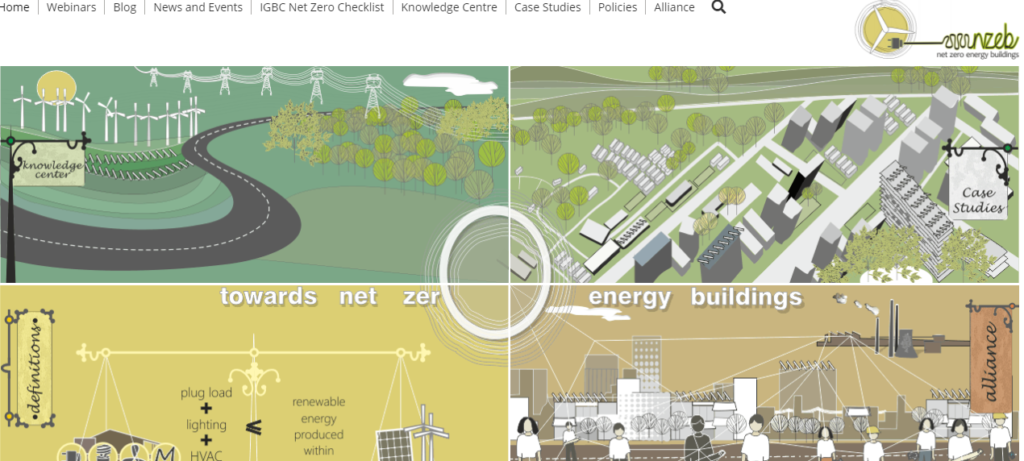Anamika Prasad | Director, Environmental Design
Introducing NZEB Portal
A Nearly Zero (also called Net-Zero) Energy Building (NZEB) can be succinctly described as a ‘highly energy efficient, grid-connected building that generates at least as much energy through on-site renewable sources as it uses, accounted for annually’. In other words, in a NZEB the difference between the annual energy consumption and the annual energy generation through systems utilizing renewable resources like solar, biomass, wind, geo- thermal, and urban waste, and other sources is equal to (or less than) zero. Countries across the globe are embracing net-zero or near-zero goals as they seek to diminish the energy footprint and carbon emissions of their building stock.
In spite of the gaining popularity of the net-zero concepts, the term lacks a lucid, universally accepted and technically consistent definition. Moreover, there are no definitive, widely accepted zero-energy metrics for quantification of targets, goals and actual building performance. Depending on the context, the net-zero scope may include remotely located renewable energy sources, take into account a time-period that is seasonal, comprise of a community-level project boundary, consider primary energy generation at the source, or use an accounting matrix that includes carbon emissions or embodied energy of building materials.
Mainstreaming NZEBs in India would require both market transformation as well as enabling policy interventions. There is a need for industry and government collaboration to catalyse, facilitate, and drive the large-scale adoption of the NZEBs. While several green building projects have embarked on the journey towards energy efficient and more sustainable habitat, the integration of renewable energy in buildings is still in a nascent stage.
The objective of the alliance is to accelerate market development of NZEBs in India, with a vision to facilitate design and construction of affordable NZEBs by 2030. To achieve this vision, NZEB alliance will undertake both long and short term activities targeted at creating an ecosystem conducive for NZEBs in India. It will initiate innovation and research to advance the design and construction practices for NZEBs. The alliance will capture and disseminate knowledge of best practices for wide scale awareness of NZEB concepts in the country. It will also encourage workforce development to facilitate inclusion of NZEB in conventional practices. The alliance will enable a market transformation towards integration of energy efficiency (EE) and renewable energy (RE) technologies in the mainstream building sector.
Transforming markets for more efficient technology and technical expertise to use the technology made available through market transformation are just two facets of enabling net zero energy future. An enabling policy environment id equally important. In India, it is essential that the net-zero goals must be accompanied by robust energy-efficiency measures coupled with a supportive renewable energy policy and a comprehensive smart grid program. The alliance will facilitate the formation and promulgation of policy and financial instruments that support transition to buildings of negligible energy footprint.
Disclaimer: This website is made possible by the support of the American People through the United States Agency for International Development (USAID). The contents of this website are the sole responsibility of Environmental Design Solutions and do not necessarily reflect the views of USAID or the United States Government.

